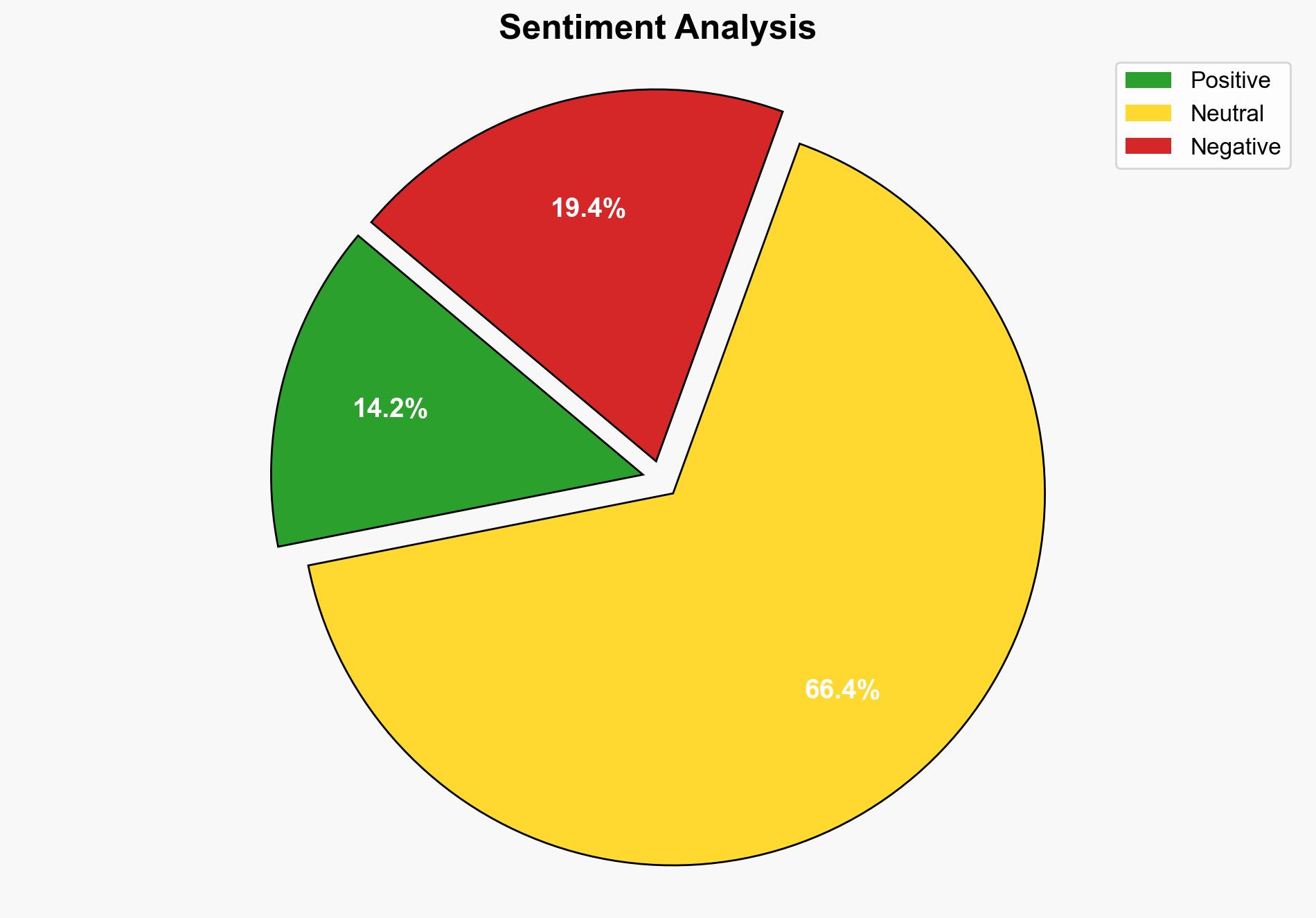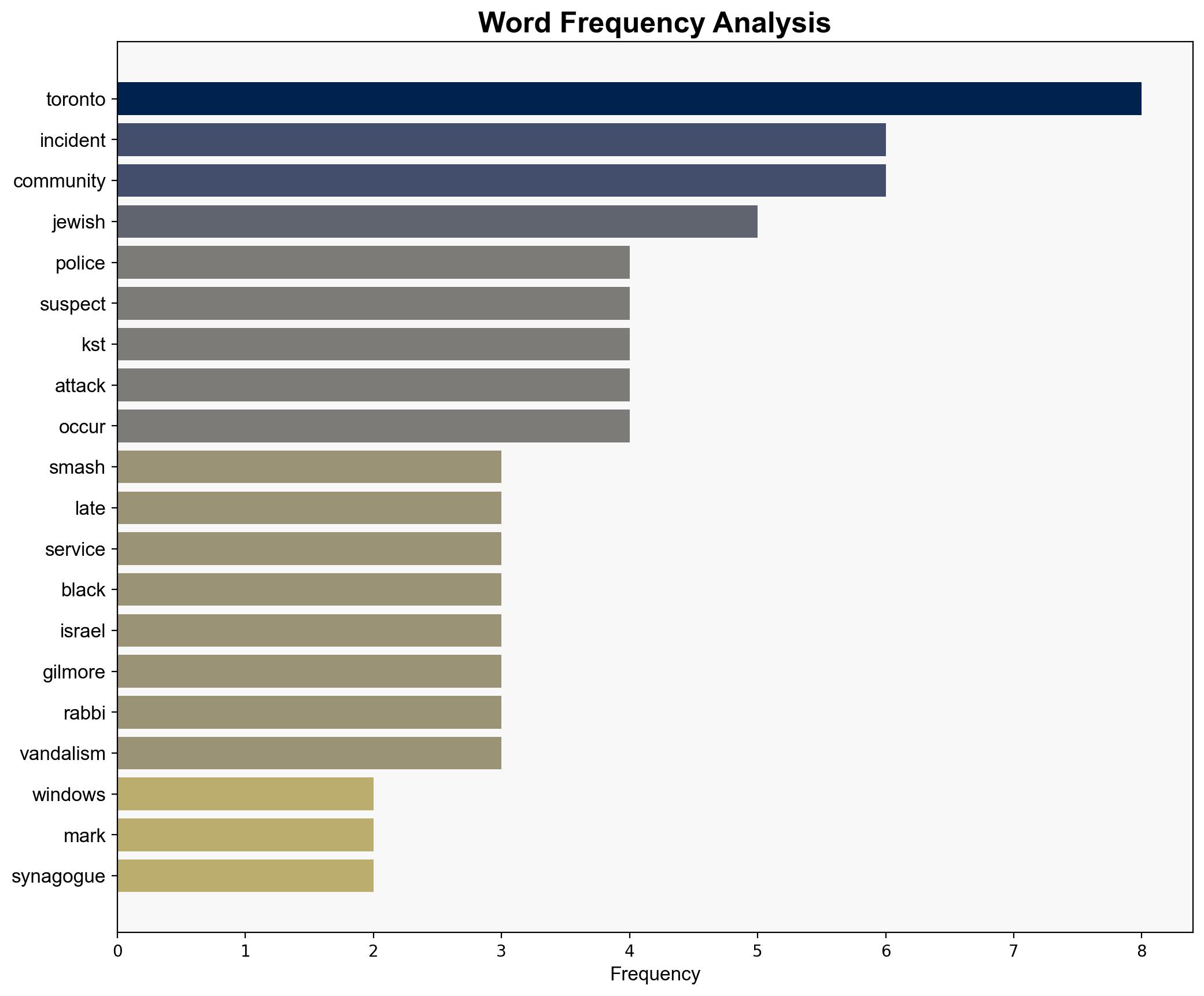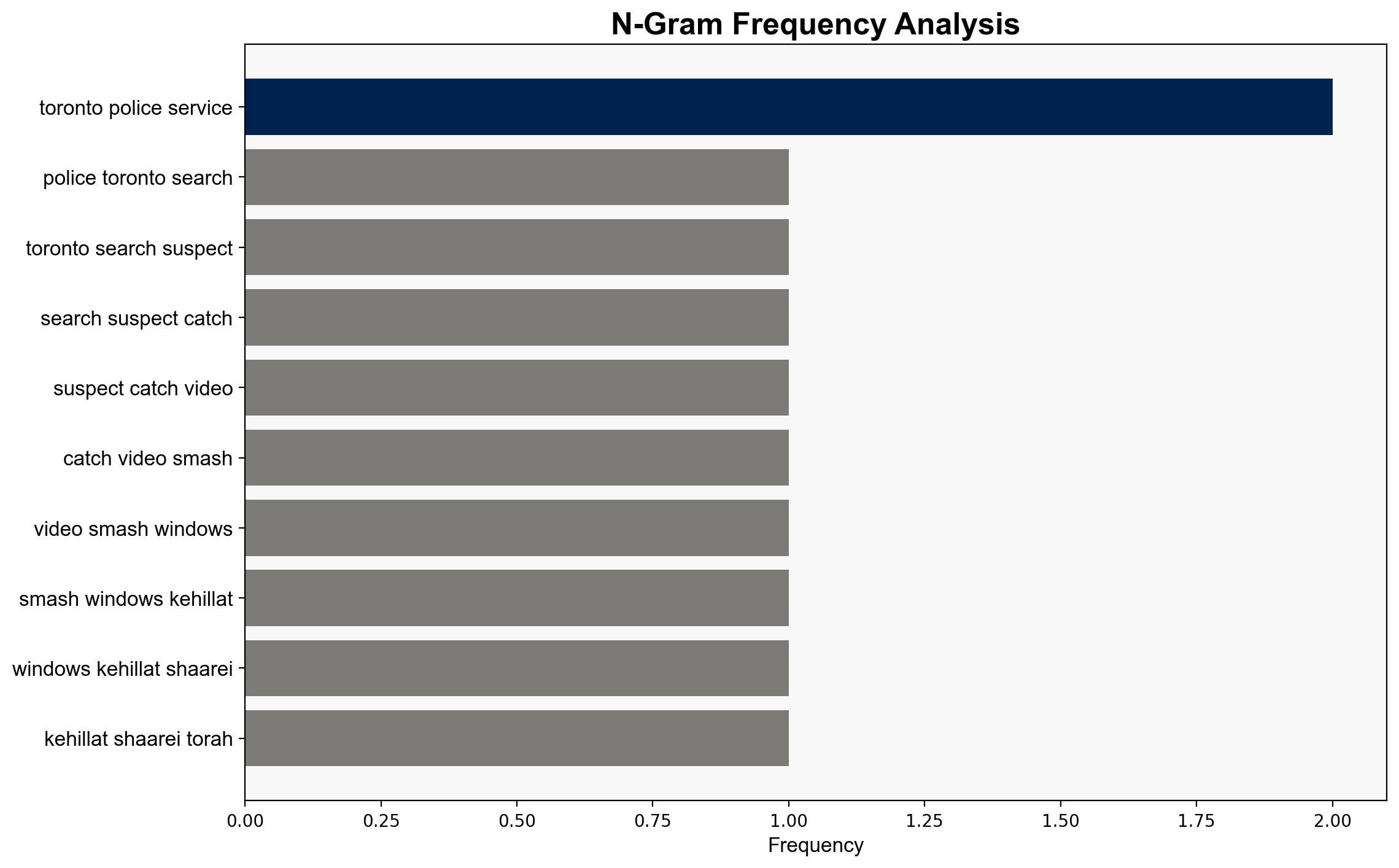Toronto synagogue vandalized for 10th time police probe hate-motivated attack – Israelnationalnews.com
Published on: 2025-11-06
Intelligence Report: Toronto synagogue vandalized for 10th time police probe hate-motivated attack – Israelnationalnews.com
1. BLUF (Bottom Line Up Front)
The repeated vandalism of the Toronto synagogue, Kehillat Shaarei Torah, is likely a targeted hate-motivated campaign against the Jewish community, with a moderate to high confidence level. The most supported hypothesis is that these attacks are part of a broader pattern of rising antisemitism in Toronto. Immediate strategic action should focus on enhanced security measures and community engagement to prevent further incidents and mitigate tensions.
2. Competing Hypotheses
1. **Hypothesis A**: The vandalism is part of a coordinated hate campaign targeting the Jewish community in Toronto, reflecting a broader rise in antisemitism.
– **Supporting Evidence**: The synagogue has been attacked ten times, coinciding with a reported increase in antisemitic incidents in Toronto. The suspect’s actions and attire suggest premeditation and intent to intimidate.
2. **Hypothesis B**: The vandalism is the work of a single individual or small group acting independently, motivated by personal grievances rather than a broader antisemitic agenda.
– **Supporting Evidence**: The suspect’s consistent method of attack and the lack of broader claims of responsibility could indicate a lone actor scenario.
Using ACH 2.0, Hypothesis A is better supported due to the alignment with broader antisemitic trends and the frequency of attacks on the same target.
3. Key Assumptions and Red Flags
– **Assumptions**: It is assumed that the suspect’s attire and method are indicative of intent and not coincidental. The link between the vandalism and broader antisemitic trends is presumed based on timing and frequency.
– **Red Flags**: The absence of direct claims of responsibility or specific threats raises questions about the true motivation. The reliance on security footage without further evidence could lead to confirmation bias.
– **Blind Spots**: Lack of information on potential suspects and their motives. The possibility of unrelated motivations or misdirection has not been fully explored.
4. Implications and Strategic Risks
– **Patterns**: The repeated attacks suggest a persistent threat to the Jewish community, potentially escalating if not addressed.
– **Cascading Threats**: Continued vandalism could incite further hate crimes or retaliatory actions, increasing community tensions.
– **Geopolitical Dimensions**: The incidents may affect Toronto’s reputation as a multicultural city and strain relations between different community groups.
– **Psychological Impact**: Ongoing attacks contribute to a climate of fear and insecurity within the Jewish community, potentially affecting community cohesion and participation.
5. Recommendations and Outlook
- Enhance security measures at the synagogue, including increased surveillance and community patrols.
- Engage with community leaders to foster dialogue and resilience against hate crimes.
- Coordinate with law enforcement to prioritize the investigation and increase visibility in affected areas.
- Scenario Projections:
- **Best Case**: Increased security and community engagement deter further attacks, reducing antisemitic incidents.
- **Worst Case**: Failure to address the issue leads to escalation and broader community unrest.
- **Most Likely**: Continued sporadic attacks with gradual improvement through targeted interventions.
6. Key Individuals and Entities
– Michael Gilmore
– Rabbi Joe Kanofsky
– Olivia Chow
7. Thematic Tags
national security threats, cybersecurity, counter-terrorism, regional focus





